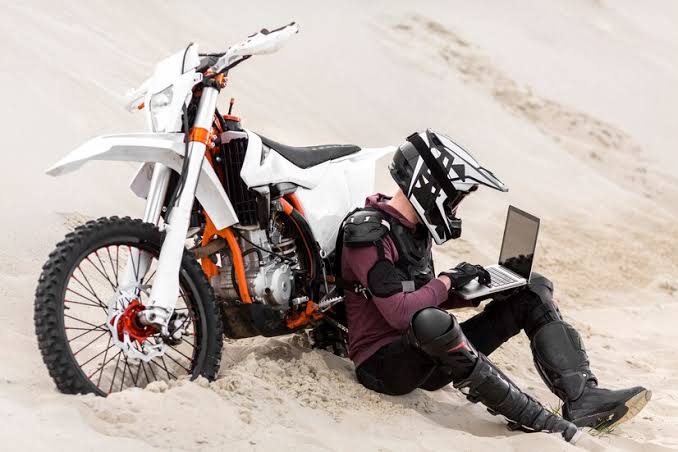Why Seat Belts Are Essential for Your Safety: Everything You Need

Introduction
Buckle up, folks! Today, we’re diving into a topic that could save your life—seat belts. They’re simple, effective, and probably the most important safety feature in any car. But how often do we stop to think about why they matter so much? Whether you’re commuting to work, heading out for a road trip, or just popping to the store, wearing your seat belt is more than just a legal requirement—it’s a life-saving habit.
In this article, we’ll break down the science, benefits, and laws surrounding seat belts, explore their history, and answer common questions about their use. Ready? Let’s roll!
The History of Seat Belts
Seat belts didn’t just pop into cars overnight. They’ve been evolving for over a century!
- Early Beginnings: The first seat belt was patented in the late 19th century for use in airplanes, not cars.
- Automotive Adoption: By the 1950s, car manufacturers started offering lap belts as optional features.
- Three-Point Seat Belt: In 1959, Volvo engineer Nils Bohlin invented the three-point seat belt we use today. It was a game-changer for car safety.
- Global Mandates: Over the years, seat belt laws have been enacted worldwide, saving millions of lives.
Why Are Seat Belts So Important?
Seat belts do much more than keep you in your seat—they’re designed to protect you in critical ways:
- Reduces Impact Force: During a crash, seat belts distribute the force across stronger parts of your body, like your chest and hips.
- Prevents Ejection: Without a seat belt, you’re at risk of being thrown from the vehicle during an accident.
- Works With Airbags: Airbags alone aren’t enough—they’re designed to work in tandem with seat belts.
- Protects Passengers: Unbelted passengers can become projectiles, endangering others in the car.
How Seat Belts Work: The Science Behind Safety
Ever wonder how something so simple can be so effective? Here’s how seat belts work:
- Energy Absorption: Seat belts stretch slightly to slow down your body gradually, reducing injury risk.
- Pre-Tensioners: Modern seat belts include pre-tensioners that tighten instantly during a collision.
- Locking Mechanism: When the car stops suddenly, the seat belt locks to hold you in place.
Types of Seat Belts
Different vehicles and seating arrangements require specific types of seat belts:
- Lap Belts: Found in older cars or middle seats. Not as safe as modern designs.
- Three-Point Belts: The standard in most cars today, combining lap and shoulder straps.
- Five-Point Harness: Common in race cars and child safety seats, offering maximum protection.
- Automatic Belts: These were popular in the 1980s but have largely been replaced by more effective designs.
Seat Belt Laws You Need to Know
Laws vary by region, but the message is clear: wear your seat belt, always!
- In the United States: All states except New Hampshire require adults to wear seat belts.
- Global Regulations: Many countries, like the UK and Australia, have strict seat belt laws for all passengers.
- Fines and Penalties: Failing to buckle up can result in hefty fines and increased insurance rates.
Common Myths About Seat Belts (Debunked!)
Let’s tackle some misconceptions:
- “I’m a good driver; I don’t need one.”
Accidents can happen to anyone, even the best drivers. - “I’ll be safer if I’m thrown clear.”
Actually, being ejected greatly increases your chance of serious injury or death. - “They’re uncomfortable.”
Modern seat belts are designed for comfort—plus, staying alive is worth a little discomfort!
Tips for Proper Seat Belt Use
- Wear it snugly: The belt should fit across your hips and chest, not your stomach or neck.
- Adjust height: Use the shoulder strap adjuster to ensure a proper fit.
- Check regularly: Inspect your seat belts for fraying or damage.
The Impact of Seat Belts on Road Safety
According to the National Highway Traffic Safety Administration (NHTSA):
- Seat belts reduce the risk of death by 45% in passenger cars.
- They prevent half of all serious injuries in crashes.
- In 2020 alone, seat belts saved nearly 15,000 lives in the U.S.
Conclusion
seat belts are more than just a strap—they’re your first line of defense in an accident. By buckling up every time you get in a car, you’re taking a simple yet powerful step to protect yourself and your loved ones. It’s easy, effective, and non-negotiable. Remember: click it or ticket!
FAQs About Seat Belts
1. Are seat belts mandatory for all passengers?
Yes, in most countries, seat belt laws apply to everyone in the vehicle, not just the driver.
2. Can seat belts cause injuries?
While seat belts can cause minor injuries like bruising, they prevent far more serious harm during accidents.
3. Do airbags replace the need for seat belts?
No, airbags are designed to work with seat belts, not replace them.
4. Are seat belts effective at low speeds?
Absolutely. Even at speeds as low as 30 mph, seat belts significantly reduce injury risks.
5. What should I do if my seat belt isn’t working?
Get it repaired immediately—driving without a functioning seat belt is unsafe and often illegal.



